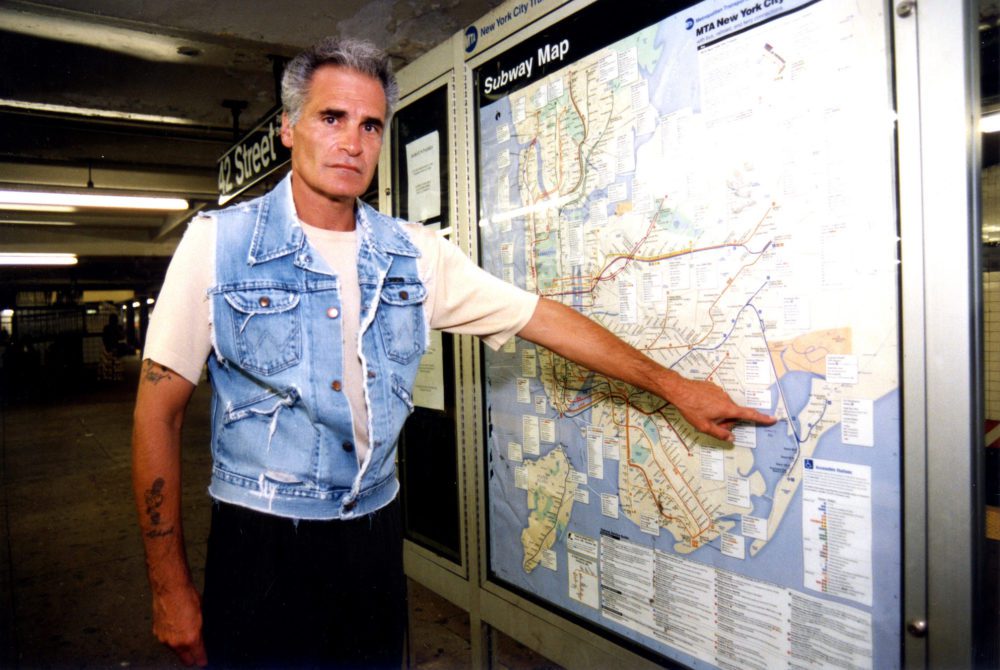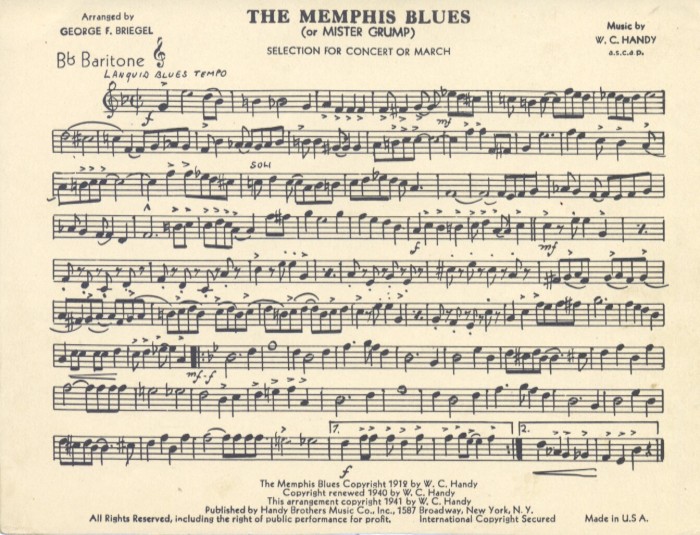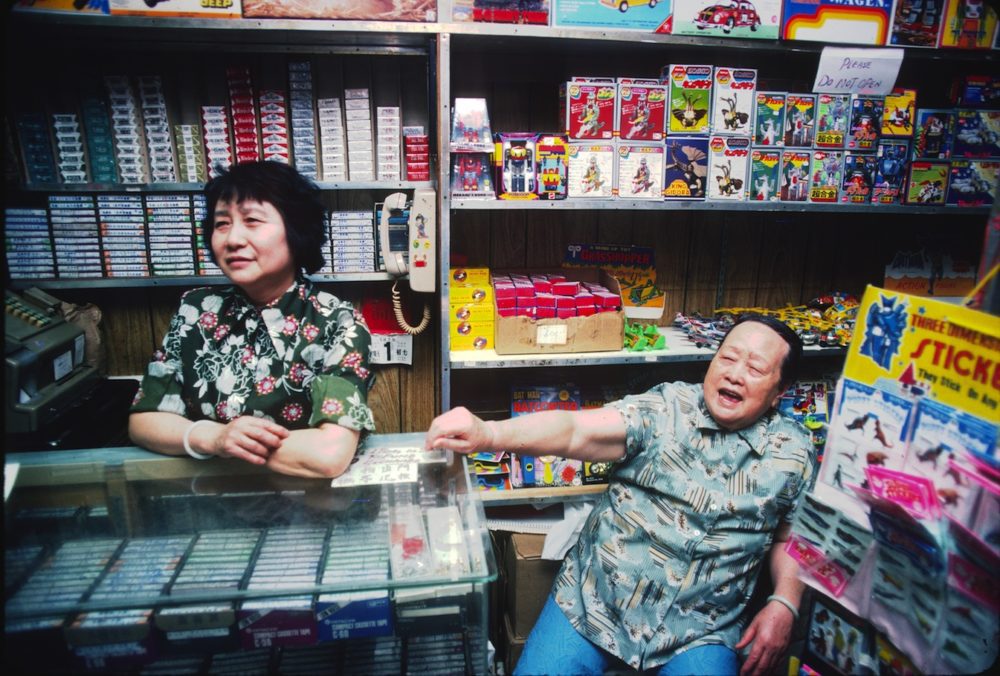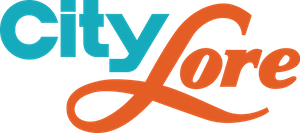Mission Statement
The City Lore Archive documents – and thereby preserves – the work of folk and community-based arts and artists to maintain a record for posterity of the quotidian of the times. Materials held in the Archive include items generated by the City Lore staff as well as items donated to the organization. The collection supports the ongoing work of City Lore staff and is accessible to outside researchers by appointment.

1988
Photo by Martha Cooper
Video: Delivery on the C-Train
The City Lore Archives are not simply a repository. They are the motherlode that all of our programs draw upon to create the exhibits in the City Lore gallery and in our “Museum without Walls” in all five boroughs. The archives come alive in key ways. They serve as a resource, and an ongoing documentation project that grows out of and provides the underpinnings for all of our public programs including the People’s Hall of Fame and Community Anchors. Increasingly, our archives have been given a public face on our encompassing story maps of New York, including Place Matters, the City Lore Story Map, and statewide Living Traditions website, and nationally through the American Folklore Society database. The Archive’s growth is driven by City Lore’s continued interest in the development of public programs and engagement with New York City’s grassroots cultures. As such, the Archive is increasingly reflective of the ephemeral media landscape today – born-digital media. As technology shifted in the 21st century, City Lore and its partners generated fewer materials in physical formats, and increasingly created resources directly as digital files. Due to this change, City Lore is in the process of reorganizing its existing archive and establishing updated cataloging and archiving methods to better reflect the trend towards digital media.
City Lore Archive’s Composition
Since its founding in 1985, City Lore has organized and preserved collections documenting New York City communities and neighborhoods through the eyes of photographers, writers, journalists, and folklorists. The collection dating furthest back is the Katrina Thomas’ photograph series Ethnic USA Collection which consists of approximately 5,000 color slides and 3,000 B&W negatives that document ethnic celebrations, cultural traditions, and rituals of daily life in New York City from 1971 to 1983. Additionally, Martha Cooper’s collection of 12,685 slides documents New York from the 1970s to the present.

Digitized from The 369th Regimental Harlem Hellfighters Marching Band collection
Much of the material housed in the City Lore Archive has been generated through the work of City Lore staff, students, and community through fieldwork and other programmatic activity. This includes materials that document New York City folklore traditions, objects and images organized for use in gallery exhibitions, and recordings of street musicians, dance recitals, poetry readings, rap battles, and teachers that represent traditions from New York City and beyond. Materials include videos tours by folklorist Elena Martinez for City Lore’s Neighborhood Tours series; interviews with artists and locals by Director Steve Zeitlin along with folklorists and cultural specialists working with City Lore; recordings of City Lore event series’ such as the People’s Poetry Gathering, gallery receptions and interviews, and performances organized by City Lore and often featuring its staff. Also currently housed in the Archives are the sheet music and song charts of The 369th Regiment Harlem Hellfighters Marching Band and the digitizations of 345 songs made up of 941 items.
During spring 2020, as a result of the Coronavirus Pandemic, City Lore introduced publicly crowdsourced digital materials into the Archive, establishing the Corona Chronicles Digital Archive. Material donated this way represents much of the archives growth during the pandemic. This method of digital collections development has garnered submissions from 200 contributors from all over the United States and has been expanded to include documentation of the Black Lives Matter protests and the Naming The Lost Memorials project.
Physical Media
- 19,320 Photograph Slides
- 5,210 Photograph negatives
- 692 Cassette Tapes
- 143 DAT Tapes
- 164 Mini DV Tapes
- 148 VHS tapes
- 50,000 Photographic Images
- 13 Linear Feet of Paper Materials
- Assorted artifacts
Digital Media
- 3,513 digital Still Images
- 994 digital Moving Images
- 555 digital Text Documents
- 108 Digital Sound Recordings

June 1979
Photo by Katrina Thomas

May 8, 2020
Photo by Martha Cooper
City Lore Collections Additional Locations
Folklore Collections Database, American Folklore Society (NFAI.R.00000009)
https://folklorecollections.org/index.php/Detail/Occurrence/Show/occurrence_id/9
Two City Lore Photograph Collections
We are grateful to the National Endowment for the Humanities for the Local History Challenge Grant that enabled the professional archiving of these two collections.
September 16, 2001
Photo by Martha Cooper
The Missing: Streetscape of a City in Mourning Collection consists of nearly 1300 color slides taken by photographer Martha Cooper to document memorial activities following the terrorist attacks of September 11, 2001. The images represent a diverse portrait of New York’s response to the tragedy, including rescue and recovery workers, spontaneous memorials and shrines, tributes to police and firefighters, wall murals, parades, and public rituals in the five boroughs, with particular emphasis on Lower Manhattan, Ground Zero, and Union Square. We extend our thanks to Martha Cooper. The Documentary Heritage Program, New York State Archives, State Education Department, provided important grant support to catalogue this collection. You can view a few images from this collection in this Virtual Exhibition.
November 26, 1974
Photo by Katrina Thomas
The Ethnic USA Collection consists of approximately 5,000 color slides and 3,000 B&W negatives taken by photographer Katrina Thomas that document ethnic celebrations, cultural traditions, and rituals of daily life in New York City from 1971 to 1983. The collection includes ethnic groups from all parts of the world, as manifested primarily in communities in the New York metropolitan area. Much of the collection documents celebrations of religious feast days and national holidays, but parades, folk festivals and political protests are also well covered, as are smaller, intimate gatherings, such as weddings, prayer gatherings, and family celebrations. We extend our thanks to Katrina Thomas. The Archival Management Program in New York University’s Dept. of History–Director Peter Wosh, and students Laura Helton and Laura Thiessen; and volunteer Nancy Tongue provided invaluable help in preparing this collection for public use.
Research Access
In person access to the City Lore Archive is by appointment. For detailed descriptions of our archival holdings, contact us at: citylore@citylore.org.



